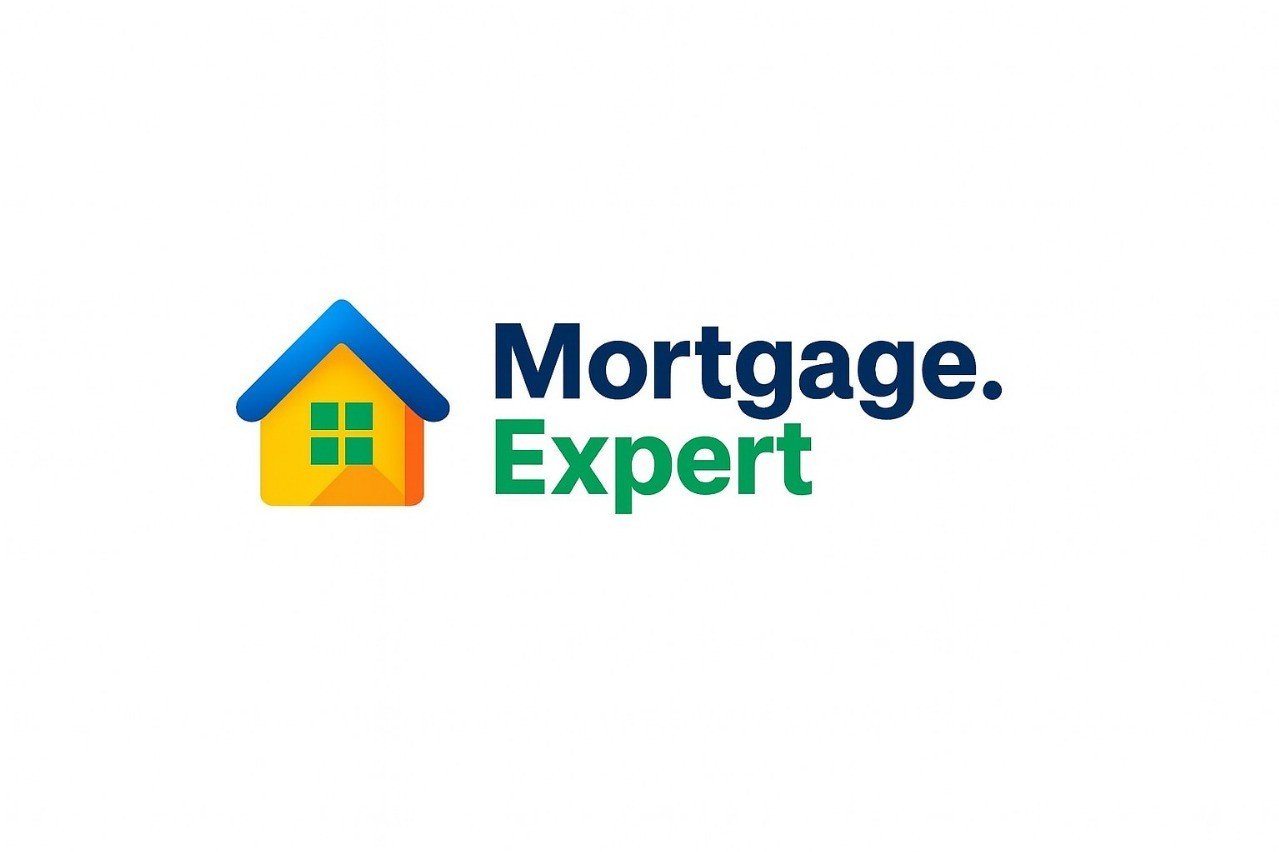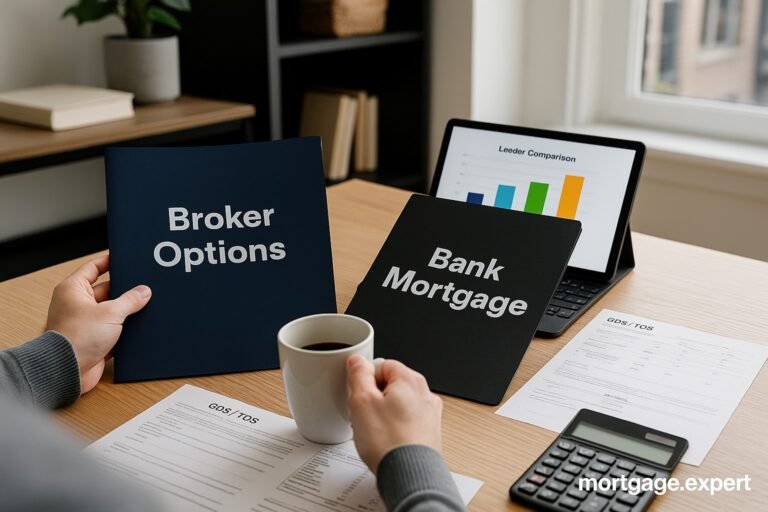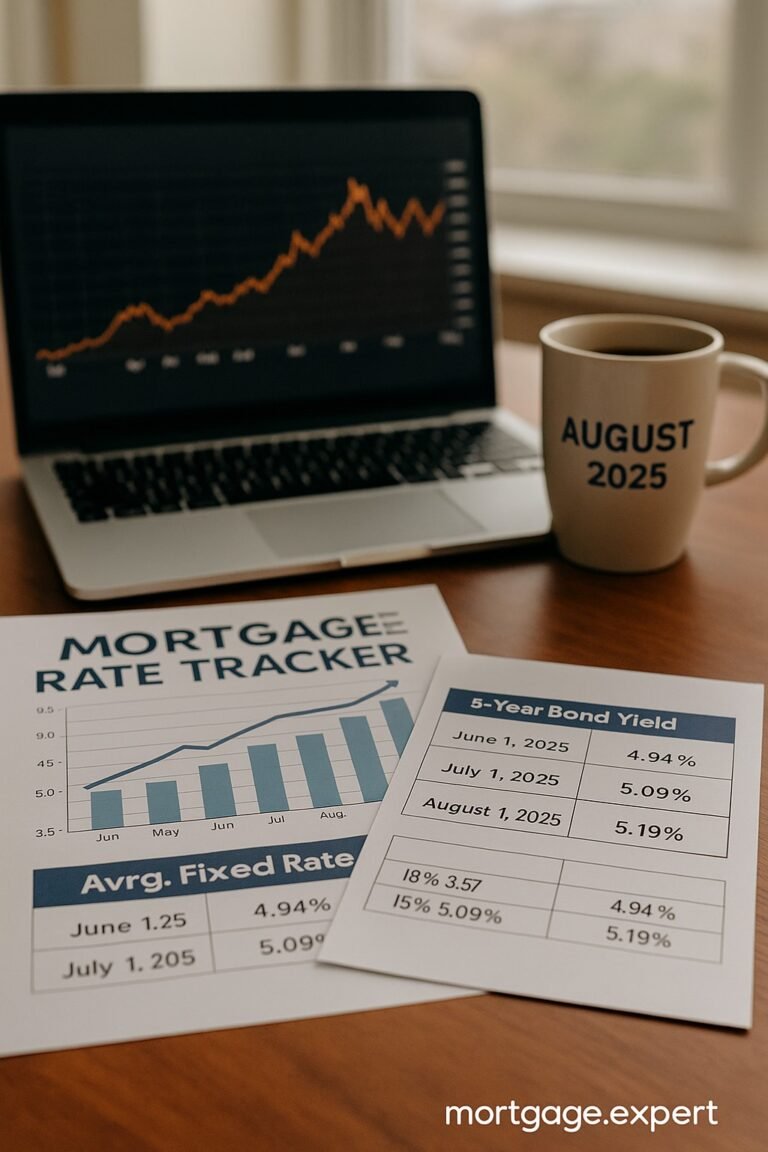
Conventional Mortgages in Canada: Are They Still Worth It in 2025?
What is a Conventional Mortgage?
A conventional mortgage — sometimes called an “uninsured mortgage” — is one where the borrower makes a down payment of at least 20% of the purchase price. That higher down payment acts as a buffer for the lender, so they don’t require mortgage default insurance.
Default insurance protects lenders if the borrower can’t make payments, and it’s mandatory when the down payment is under 20%. But if you meet the 20% threshold, you skip that added cost entirely.
Let’s say you’re buying a $500,000 home. If you put down 20% ($100,000), your lender would finance the remaining $400,000 — and you’d be eligible for a conventional mortgage with no insurance premiums tacked on.
How Do Conventional Mortgages Work?
Once you qualify with your 20% down payment, your mortgage works just like any other — you choose a term, decide on fixed or variable rates, and begin paying it off over your selected amortization period (usually 25 to 30 years).
Where conventional mortgages differ is in the long-term math. Because there’s no default insurance, your monthly payments can be lower, and you start off with more equity in the home. You also have more flexibility to refinance or borrow against that equity later.
However, uninsured mortgages can sometimes carry slightly higher interest rates. That’s because the lender is assuming more risk — there’s no insurance coverage if you default.
Why Some Homebuyers Prefer Conventional Mortgages
There are a few clear advantages that make conventional mortgages attractive, especially for repeat buyers or those with strong savings.
First, no mortgage default insurance means saving thousands of dollars upfront. Default insurance premiums can add anywhere from 0.6% to 4% of your loan amount, depending on how much you put down. Skipping this fee can translate into huge savings.
Second, a bigger down payment gives you more home equity from day one. That puts you in a better position to qualify for a HELOC, refinance at lower rates later, or sell with more profit if prices rise.
And third, a smaller loan principal reduces how much interest you pay over the life of the mortgage — even if your rate is slightly higher.
But It’s Not Always Perfect: The Downsides
Conventional mortgages come with one big upfront hurdle: affordability.
Not everyone has the savings to put 20% down. For a $700,000 home, that’s $140,000 — a steep ask for many first-time buyers. That’s why many new homeowners go with high-ratio mortgages, even if it means paying for insurance.
There’s also the matter of interest rates. While conventional mortgages dodge insurance costs, lenders sometimes offer better rates on insured mortgages because the risk is lower. So, weird as it sounds, you might end up with a slightly higher rate on an uninsured loan.
And finally, putting a large chunk of your savings into a down payment may leave you with less liquidity for closing costs, moving expenses, or future emergencies.
Conventional vs. High-Ratio Mortgages
Here’s a quick comparison to make the differences easier to understand:
Conventional Mortgage
- Requires 20%+ down
- No mortgage insurance
- More flexibility for homes over $1.5 million
- May have slightly higher interest rates
- More equity upfront
High-Ratio Mortgage
- 5% to 19.99% down
- Requires mortgage insurance (CMHC, Sagen, or Canada Guaranty)
- Capped at $1 million purchase price (if insured)
- Lower rates due to reduced risk for lenders
- More cash flexibility upfront
🏦 25-Year Cost Comparison: Conventional vs. High-Ratio Mortgage
This table shows the full 25-year cost of buying a $600,000 home in Canada using either a conventional (20% down) or high-ratio (10% down) mortgage.
| Cost Item | Conventional (20% Down) | High-Ratio (10% Down) |
|---|---|---|
| Down Payment | $120,000 (20%) | $60,000 (10%) |
| Mortgage Loan Amount | $480,000 | $540,000 |
| CMHC Insurance Premium | $0 | $21,600 (4.00%) |
| Total Loan (with Insurance) | $480,000 | $561,600 |
| Monthly Mortgage Payment (5.24%, 25-year amortization) |
$2,873 | $3,359 |
| Total Interest Paid (Est.) | $380,000 | $445,000 |
| 🔹 Total Cost (Down Payment + Mortgage + Interest + Insurance) | $980,000 | $1,066,600 |
What Impacts Interest Rates on a Conventional Mortgage?
Even within the conventional mortgage space, rates can vary depending on a few personal and market factors:
- Credit Score: Higher scores typically unlock better rates.
- Term Length: A 5-year fixed might offer different pricing than a 3-year variable.
- Amortization: Choosing a 30-year amortization could mean a slightly higher rate than 25 years.
- Lender Type: Credit unions and monoline lenders sometimes offer more competitive rates than big banks.
Common Questions About Conventional Mortgages
What’s the minimum down payment? It’s 20% of the purchase price. So on a $750,000 home, you’d need at least $150,000.
Can I switch from high-ratio to conventional later? Yes — usually through refinancing once you’ve built enough equity (typically after crossing 20% equity through payments or price growth).
Are there restrictions on the type of property? Conventional mortgages give more flexibility. You can buy properties over $1 million and amortize over 30 years if needed.
Final Thoughts: Is a Conventional Mortgage Right for You?
If you’ve got the savings, a conventional mortgage can be a financially smart move. You avoid insurance premiums, start with higher equity, and may have more flexibility in the long run.
But if that 20% down payment stretches you too thin, a high-ratio mortgage might be the better fit — at least initially. The key is knowing your financial capacity, your goals for the home, and your long-term plan.
Still unsure? Chat with one of our expert mortgage advisors — we’ll help you weigh the trade-offs and find the best path for your situation.
🔍 Do You Qualify for a Conventional Mortgage?
A conventional mortgage typically requires at least 20% down. Follow this flow to see if you’re eligible.
👉 Do you have at least 20% down payment?
Yes → Go to next question ↓
No → ❌ Not eligible – consider a high-ratio mortgage
👉 Is your credit score above 680?
Yes → Go to next question ↓
No → ⚠️ May not qualify with A lenders — check with a broker
👉 Do you have stable, verifiable income (T4s/NOAs)?
Yes → ✅ You likely qualify for a conventional mortgage
No → ⚠️ May qualify with stated income lenders (B lenders)
👉 Are you purchasing a property under $1M?
Yes → ✅ Proceed with conventional mortgage options
No → 💡 May need additional down payment or alternative solutions
📊 Ready to Secure Your Best Mortgage Rate?
Whether you’re a first-time homebuyer or refinancing, our experts are here to help you navigate the mortgage process with ease. Get the best rates today.
Stuck with a Mortgage Decision?
Don’t stress — our team is here to help. Reach out for free, no-obligation guidance.
Contact the Experts



